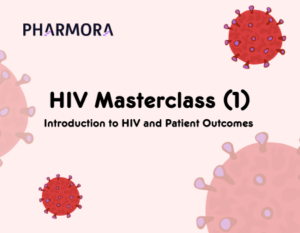By Josh Bryning

What is HIV/AIDS?
Human Immunodeficiency Virus (HIV) is a retrovirus that attacks a person’s immune system, in turn affecting their ability to fight off infections and diseases. More specifically, HIV targets CD4 cells (a type of white blood cell). Acquired immunodeficiency syndrome (AIDS) is a disease that occurs in the most advanced stage of HIV infection and refers to a number of possibly life-threatening infections and illnesses that happen when a person’s immune system has been severely affected by HIV.
History of HIV
HIV is still a relatively new discovery. It was not until 1983 that it was first recognised at the Institut Pasteur in Paris, where the retrovirus was seen under a microscope for the first time. At this time, it was initially called Lymphadenopathy-Associated Virus (LAV), before being changed to HIV in 1986. It is worth mentioning that the symptoms and general reporting of the disease started in October 1980 where Kaposi’s sarcoma, a common complication in early HIV patients which causes skin lesions, was observed in several young homosexual males in Los Angeles. 21 cases were reported by the CDC in June 1981.
The CDC then published an article in a weekly report a short while later in July 1981, detailing 5 cases of a rare pneumonia infection, Pneumocystis carinii pneumonia (PCP) in young gay men. It was also reported that the young (previously healthy) men had other unusual infections, indicating that there was an issue with their immune systems. These were the first reports of the disease that would later be known as HIV.
How does HIV get into the human body?
HIV is transmitted via exchange of blood, seminal & vaginal fluids, or breast milk with another person carrying the disease (transmission can be essentially prevented by reducing the “viral load” and achieving “viral suppression”, but more on this in another blog, so keep your eyes peeled!). HIV can be diagnosed by tests looking for HIV antibodies in a person’s blood. If there are HIV antibodies present in a person’s blood, they will be HIV positive, meaning they have the disease. There is currently no cure.
Once inside the body, HIV finds the CD4 cells and binds itself to receptors on the surface of the CD4 cell membrane. Once the HIV envelope (the outer surface of the virus) fuses with the CD4 cell membrane, the HIV RNA and the enzymes inside the virus can enter the cell. Once inside the cell, one of HIV’s enzymes, reverse transcriptase, converts the HIV RNA into DNA which allows it to enter the cell’s nucleus. Another HIV enzyme, integrase, inserts the HIV DNA into the DNA of the CD4 cell. HIV will then use the cell’s organelles to produce the protein chains that make up new, immature HIV cells. These proteins move to the surface of the cell and assemble into an immature HIV cell (non-infective). Finally, the newly created HIV cell pushes itself out of the host CD4 cell. A third HIV enzyme, protease, breaks up the proteins in the cell, creating the mature version of the virus, ready to target more CD4 cells.
Why is HIV so dangerous?
Generally, the CD4 cells do not survive the infection. HIV can induce programmed cell death in the CD4 cells it infects, as well as inducing apoptosis in non-infected CD4 cells in a number of different ways. This is the main mechanism by which HIV sabotages the host’s immune system. Further to this, HIV can store millions of copies of itself in “latent reservoirs” of CD4 cells, where they are not actively producing new HIV cells. This means that from the immune system’s perspective, they are not a foreign entity and will not be destroyed. These reservoirs can remain dormant for years, before becoming active again and start making more viruses.
In the 1980s, HIV was essentially a death sentence, as there were no treatments available for it, and HIV eventually developed into AIDS. The CDC reported that between 1981 and 1990, more than 100,000 people in the United Sates had died from HIV/AIDS. The epidemic was far worse in Africa, however. The WHO estimates that between 250,000 and 400,000 people in Africa died from HIV-related causes, and that was in 1990 alone. People who contracted the virus were often shunned in society and treated as pariahs. This was mainly due to a lack of education around the virus, with many people believing it was transmissible via saliva and other forms of contact such as touch, even when being in contact with inanimate objects such as door knobs and toilet seats. We will look into the stigma of HIV/AIDS and the results of it a bit further in our next HIV blog, so keep an eye out for that!
Due to the severe human cost of the disease, treatments soon became available in March 1987, see our next blog for more information on it as we delve into the issues surrounding HIV treatment!
References
Cummins, N., & Badley, A. (2014). Making sense of how HIV kills infected CD4 T cells: implications for HIV cure. Molecular and Cellular Therapies, 2:20.
Heller, J. (2015). Rumors and Realities: Making Sense of HIV/AIDS Conspiracy Narratives and Contemporary Legends. American Journal of Public Health, 43-50.
HIV.gov. (2024). A Timeline of HIV and AIDS. Retrieved from HIV.gov: https://www.hiv.gov/hiv-basics/overview/history/hiv-and-aids-timeline#year-2023
HIV.org. (2021, August 4). HIV Overview: The HIV Life Cycle. Retrieved from HIV.org: https://hivinfo.nih.gov/understanding-hiv/fact-sheets/hiv-life-cycle
Institut Pasteur. (2013, May 15). 40 Years of HIV Discovery. Retrieved from Institut Pasteur : https://www.pasteur.fr/en/research-journal/news/40-years-hiv-discovery-virus-responsible-aids-identified-may-20-1983#:~:text=May%2020%2C%201983-,40%20years%20of%20HIV%20discovery%3A%20the%20virus%20responsible%20for%20AIDS,identified%20on%20May%2020%2C%20
Institute of Medicine (US) Committee to Study HIV Transmission Through Blood and Blood Products. (1995). HIV And The Blood Supply: An Analysis Of Crisis Decisionmaking. Washington DC: National Academies Press (US).
New York State Department of Health. (2021, July). HIV: The Basics. Retrieved from New York State Department of Health: https://www.health.ny.gov/diseases/aids/general/resources/child/docs/chapter_1.pdf
NHS. (2021, April 22). Overview: HIV and AIDS. Retrieved from NHS: https://www.nhs.uk/conditions/hiv-and-aids/#:~:text=AIDS%20(acquired%20immune%20deficiency%20syndrome,another%2C%20the%20HIV%20virus%20can.
WHO. (2024, July 22). HIV – Number of people dying from HIV-related causes. Retrieved from WHO: https://www.who.int/data/gho/data/indicators/indicator-details/GHO/number-of-deaths-due-to-hiv-aids#:~:text=An%20estimated%20420%20000%20%5B340,by%20almost%2055%25%20since%202010.